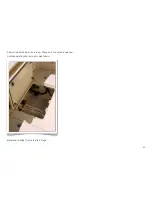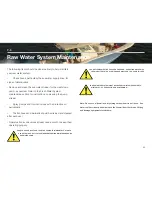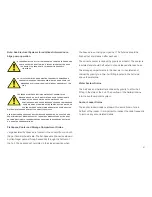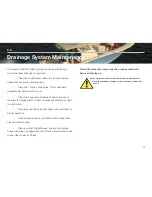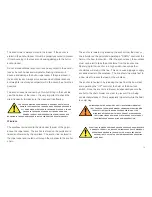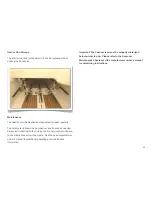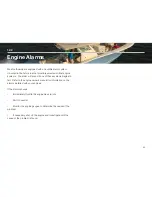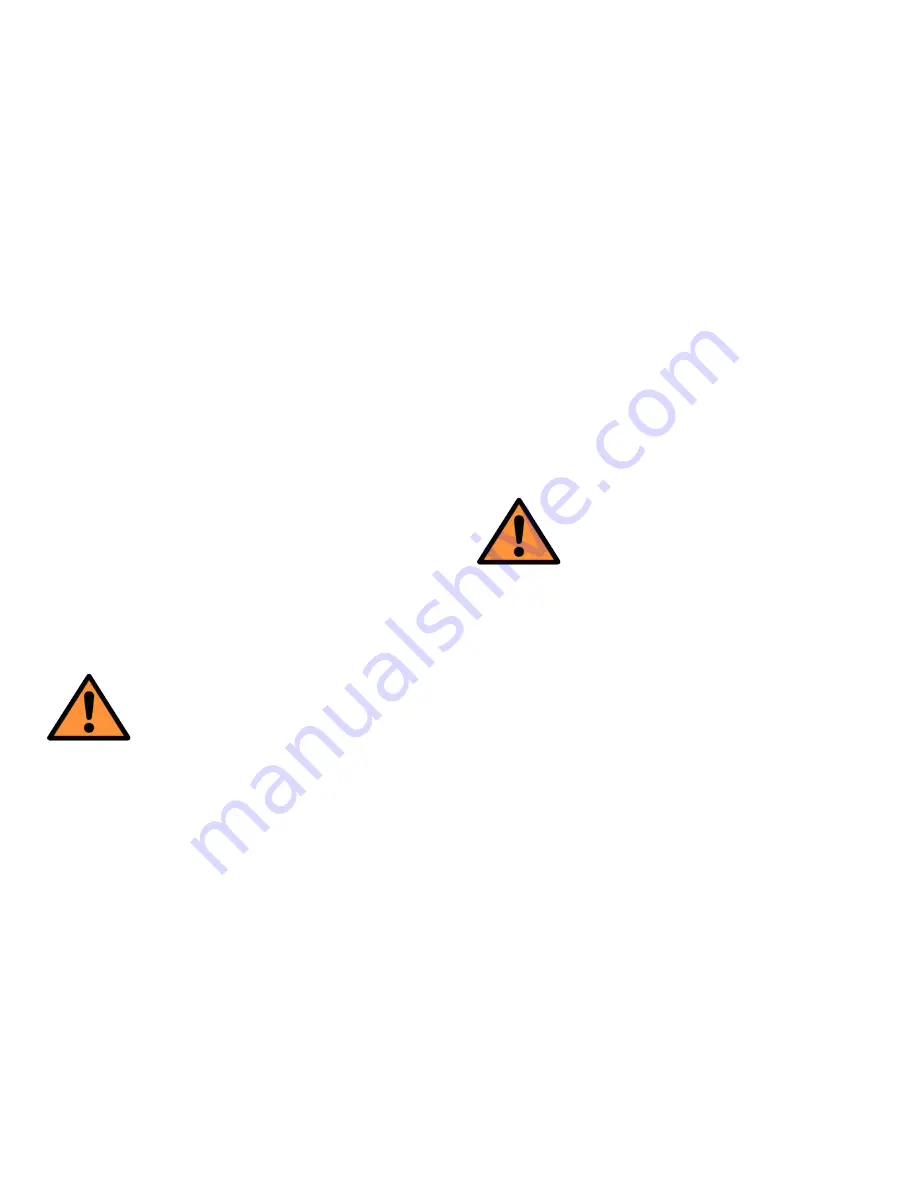
The bracket is designed so the ladder can be rotated out of the
water to a near vertical position. As the ladder nears the vertical
position, the top studs will align to the vertical slots in the bracket
allowing the ladder to slide down and lock in the up position. This
position is convenient for moving short distances without
removing and storing the ladder.
For normal cruising or fishing, the ladder should be removed and
stored. To remove the ladder, rotate it to the up position. Lift the
ladder so the studs slide up to the horizontal slot in the ladder
bracket and rotate the ladder 90 degrees to release the studs
from the bracket. Secure the ladder inside the console.
Note: The swing design of the ladder and bracket allows it to
swing up in the event that the boat is operated without
removing the ladder. This helps to prevent damage to the
ladder and bracket.
MOVING PROPELLERS ARE DANGEROUS. THEY CAN CAUSE DEATH, LOSS
OF LIMBS OR OTHER SEVERE INJURY. DO NOT USE THE SWIM
PLATFORM OR SWIM LADDER WHILE ENGINE IS RUNNING. STOP THE
ENGINES IF DIVERS OR SWIMMERS ARE ATTEMPTING TO BOARD.
ALWAYS REMOVE AND PROPERLY STORE THE LADDER BEFORE
STARTING THE ENGINES.
Trim Tabs
The trim tabs are located on the transom below the swim
platform. The trim tabs are an important part of the control
systems. Please refer to the Helm Control Systems chapter for
detailed information on the trim tabs.
Underwater Lights (optional)
Your boat may be equipped with optional underwater lights
mounted in the transom. The underwater lights are activated by a
switch in the helm switch panel and should only be used when
the boat is in the water and the lights are submerged.
DO NOT OPERATE LIGHTS OUT OF THE WATER. OPERATING THE LIGHTS
WHEN THE BOAT IS OUT OF THE WATER CAN CAUSE EXCESSIVE
TEMPERATURE BUILDUP IN THE FIXTURE RESULTING IN DAMAGE TO
SEALS OR POSSIBLE FAILURE OF THE SEAL BETWEEN THE LIGHT
HOUSING AND HULL.
76
Summary of Contents for 320 LXF
Page 1: ...320 LXF Scout Boats OWNER MANUAL ...
Page 2: ...Chapter 1 Owner s Information Warranty Certification and Boat Information ...
Page 11: ...Chapter 2 Propulsion A guide to your boat s propulsion system ...
Page 32: ...Chapter 4 Fuel System An overview of the fuel system of your boat ...
Page 40: ...Chapter 5 Electrical System An overview of the electrical system of your boat ...
Page 54: ...Chapter 6 Fresh Water System An overview of the fresh water system of your boat ...
Page 59: ...Chapter 7 Raw Water System An overview of the raw water system of your boat ...
Page 65: ...Chapter 8 Drainage System An overview of the drainage system of your boat ...
Page 70: ...Chapter 9 Ventilation System An overview of the ventilation system of your boat ...
Page 73: ...Chapter 10 Exterior Equipment An overview of the exterior equipment on your boat ...
Page 83: ...Chapter 11 Interior Equipment An overview of the interior equipment on your boat ...
Page 88: ...Chapter 12 Safety Equipment An overview of the safety equipment on your boat ...
Page 99: ...Chapter 13 Operation A general guide to operating your boat ...
Page 124: ...Chapter 14 Routine Maintenance A guide to keeping your boat running in good condition ...
Page 147: ...Chapter 16 Appendix Reference documents logs and schematics for your boat ...
Page 154: ...153 ...
Page 155: ...154 ...
Page 156: ...155 ...
Page 157: ...156 ...
Page 159: ...158 ...
Page 160: ...159 ...
Page 162: ...161 ...

